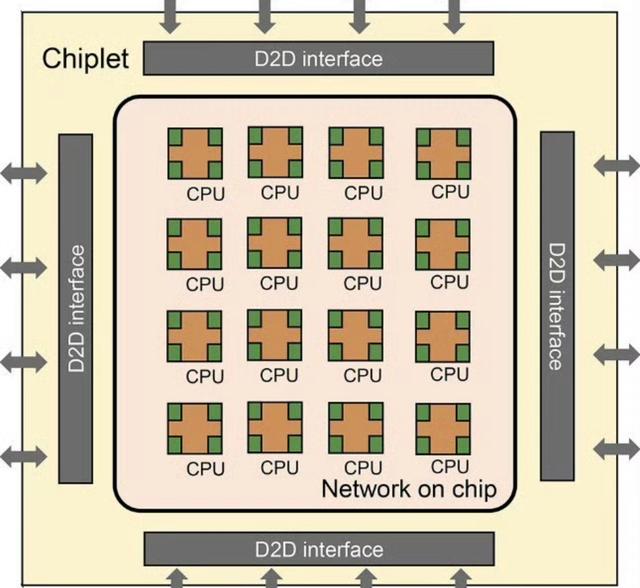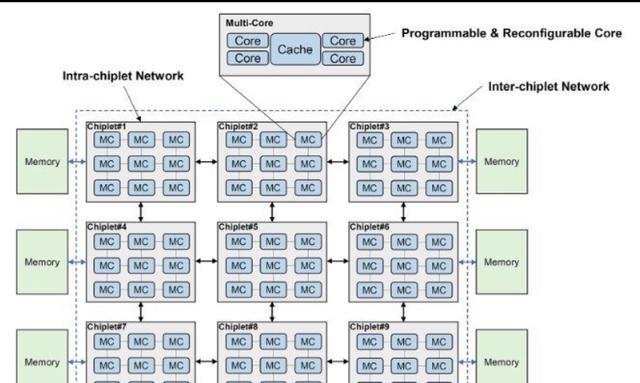Chinese Academy of Sciences Unveils Revolutionary 256-Core RISC-V Chip: Targeting Future 1600-Core Megachip Development
Breakthrough Chiplet Technology Powers Next-Generation Computing

In a significant advancement for China’s semiconductor industry, the Chinese Academy of Sciences has recently announced their successful development of a groundbreaking 256-core processor. This innovative chip represents a major milestone in China’s pursuit of computing self-sufficiency and establishes a foundation for their ambitious goal of creating future chips with an extraordinary 1600 cores.
The processor utilizes the open-source RISC-V architecture, providing China with greater technological independence from Western intellectual property. Employing advanced Chiplet technology, this design approach offers substantial cost advantages while delivering exceptional computing capabilities that will energize China’s supercomputing initiatives.
According to technical specifications, engineers divided the processor into 16 distinct chiplets, with each chiplet housing 16 RISC-V cores. This modular approach not only enhances integration density but significantly improves performance metrics and power efficiency characteristics. The architecture’s inherent scalability presents tremendous opportunities for future expansions and modifications.
Strategic Manufacturing Decisions and Performance Implications

The development team selected 22nm fabrication technology for manufacturing the 256-core processor. While more advanced than many domestic alternatives, this process node remains several generations behind cutting-edge 5nm and 3nm technologies utilized by international semiconductor leaders. Nevertheless, this strategic choice delivers superior manufacturing yield rates and more economical production costs.
Industry analysts believe the fabrication likely occurred at SMIC (Semiconductor Manufacturing International Corporation) or another domestic Chinese foundry, highlighting China’s growing semiconductor self-reliance capabilities. The processor’s 256 cores enable massive parallel computing tasks, achieving exceptional computational throughput and energy efficiency ratios.
Scaling Towards Computing Supremacy
Looking ahead, research teams have outlined an ambitious roadmap that extends well beyond the current 256-core implementation. By significantly increasing chiplet quantity, they aim to expand core count to a remarkable 1600 cores in future iterations. Should this objective be realized, the processor would establish itself as a global pioneer in many-core architecture design, delivering unprecedented computational capabilities.
Transformative Applications Across Multiple Domains
The potential applications for this innovative processor span numerous high-value technological sectors. In high-performance computing environments, these chips could potentially replace traditional CPU and GPU combinations, serving as the computational foundation for next-generation supercomputers. Cloud computing and big data analytics operations stand to benefit tremendously from the chip’s parallel processing architecture and enhanced data handling capabilities.
Furthermore, the processor shows exceptional promise for artificial intelligence workloads, internet of things implementations, and various emerging technological domains. The massive parallelism offered by the multi-core design makes it particularly well-suited for AI training algorithms, complex simulations, and scientific research applications requiring immense computational resources.
Achieving the ambitious leap from 256 to 1600 cores presents considerable engineering challenges. Research teams must solve complex problems surrounding inter-core communication protocols, power consumption optimization, and thermal dissipation requirements. However, ongoing technological advancements and dedicated research efforts are expected to overcome these obstacles in the coming years.
The Chinese Academy of Sciences has emphasized their continued commitment to advancing supercomputing technologies. Their ongoing research will focus on further enhancing chip performance characteristics and energy efficiency metrics while actively pursuing higher-level supercomputing breakthroughs. This achievement not only reinforces the Academy’s leadership position in supercomputing research but also injects fresh momentum into China’s broader information technology development initiatives.